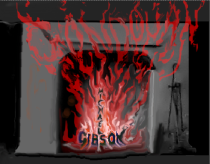Some Notes towards a constructive art history
by Dontatien Grau
Without anyone being aware of the matter or even discussing it, art history is going through exactly the same crisis as all other forms of knowledge. Parochial quarrels arise regarding the need for teaching the discipline in high school; disputes question the potential institution of a high-level examination to recruit teachers in art history, in direct competition with history in general, or with geography. All these debates cannot eclipse the deep malaise underlying the entire practice of this discipline. This unease is twofold: it concerns all at once a lack of encyclopedic scope in the accumulation of knowledge and the absence of such methodological ambitions as those that once characterized it. To quote just a few examples, the great “art-lovers” of the 19th and early 20th centuries, such as John Ruskin or Bernard Berenson, were men of vast erudition. At the same time, figures like Erwin Panofsky or André Chastel, were also inventing new methods for the analysis both of artworks and of creative moments.
The age of knowledge and the age of method were followed by a bastardized temporality, in which neither of the former are dominant. It is therefore striking to note that the author of a “plea for art history” Pour l’histoire de l’art, Eric de Chassey[1,], director of the French Academy in Rome, is not a devotee of the traditional discipline, but rather of modern and contemporary art. Which seems to suggest that art history must seek its most passionate supporters among the ranks of those who would, at first sight, appear to be its enemies. One might well ask oneself which academic art historian could compete with the authority of a Federico Zeri writing for La Stampa, or of a Pierre Rosenberg for Corriere della Sera, or even and above all, of André Chastel as a journalist for Le Monde ? For sure, academics still write articles in the newspapers. But none of these, to be quite honest, bears the same significance as the previously mentioned art historians. After all, the only art critic to enjoy any kind of reputation outside the art world is a celebrity whose fame can only be ascribed to wrong reasons, the Italian Vittorio Sgarbi. Grim prospects, surely, for art history…
In such circumstances we should turn back to the founding questions and ask oneself what methodology, what material and what modes of reflection would enable us to provide new foundations for art history – a badly deteriorated matter. A recently reprinted book, Michael Francis Gibson’s The Mill and the Cross [2], provides us with a few clues. First off, it is not written by a professional academic – the author is an art lover, a connaisseur, in the sense the word assumes in the book devoted to Federico Zeri and published under the title Il conoscitore d’arte[3]. A long-time journalist for the International Herald Tribune, Gibson brings together in his book the results of a precise and specific inquiry, but also of his own life and of his scattered thoughts. However, he does not stake out a limited and narrow outlook, but rather the sedimentation of a variety of sources, unified by the cohesion of his theme. He nevertheless carefully read relevant period texts, which provide so many articulations to his demonstration which deals, the point is essential, on a single work of art. A book on a painting , Bruegel’s Way to Calvary, dated 1564 which hangs in the Kunsthistorisches Museum in Vienna.
The most impressive aspect of this book resides in the way it uses the unique documentation to which the author had access: the text is richly illustrated with full scale enlargements of details of Bruegel’s work. All of these details are absolutely stunning: they allow us to discover that the tiniest portion, the minutest area of the painting was the object of the most careful execution, akin to that of a mediaeval manuscript. The painter’s incredible technical capacities lie exposed, for the first time, thanks to the iconography of this publication.
But let’s return to our methodological question. Let us say that, starting from Michael Francis Gibson’s perspective, it may be possible to work out a threefold, dialectical recipe for a history of art: the first component would be a favorable ground, which might easily be identified with a certain openness of mind -- the very approach of an enlightened amateur. The second: an abundant documentation, a learned and precise research on the relevant topic. The third would be the spark which the first two elements, should, under favorable circumstances, ignite. Which brings to mind, in the case of The Mill and the Cross, certain passages dealing with the architecture of the mill, its symbolic import in the Christian world; but also the problems raised by the minute size of Christ in this painting, or the evocation of Bruegel’s emulation with Bosch, his model – these are the sort of ideas that should be extracted from this slim tome, in order to elaborate, at last, an analytical paradigm.
See Donatien Grau's blog
http://laregledujeu.org/grau/2012/08/06/178/notes-pour-une-histoire-de-l%E2%80%99art-constructive/
[1] Eric de Chassey, Pour l’histoire de l’art, Actes Sud, Arles, 2011
[2] Michael Francis Gibson, The Mill and the Cross, University of Levana Press, Paris, 2011
[3] Federico Zeri, Il conoscitore d’arte, Annali, Associazione Nomentana di Storia e Archeologia Onlus, Monterotondo, 2004


